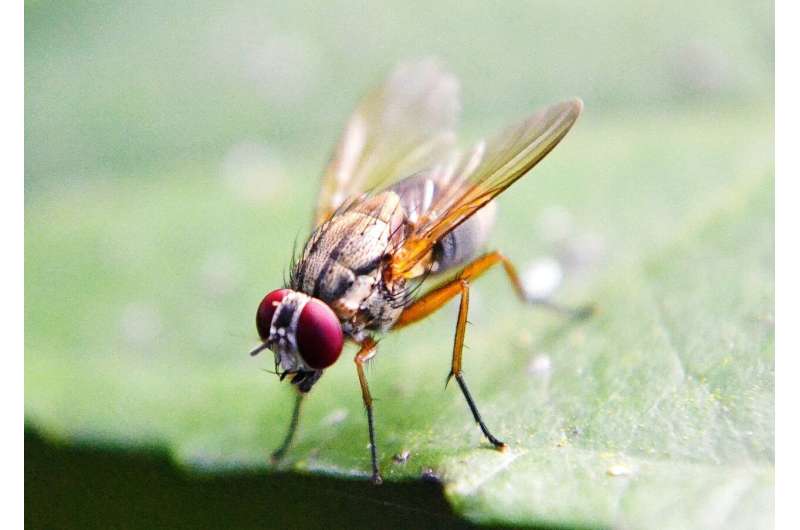Biologists identify neural circuits associated with aging

Biologists at the University of Iowa have pinpointed how fruit flies—no matter their age—maintained neural circuits for certain motor functions, while losing their edge in other performance measures.
The biologists looked at how well individual neurons and neural circuits function as flies age and when they are subjected to stressors such as changes in temperature and an erosion in protective anti-oxidants in their bodies. They identified biomarkers of aging in the electrical performance of specific motor circuits, separating circuits that weakened as flies aged to those that remained the same no matter the fly's age.
One of the "aging-resilient circuits," the biologists found, was in the fly's ability to escape danger (such as a fly swatter).
On the other hand, flies' muscle activity during flight and the neural circuits recruited during seizures weakened as they got older.
"Our identification of aging 'landmarks' in motor circuit function will help future studies in uncovering genetic pathways or environmental factors contributing to healthy aging in the brain as well as age-related neurodegeneration," says Atulya Iyengar, post-doctoral researcher in the Department of Biology and a researcher with the Iowa Neuroscience Institute.
The study is titled, "Distinct aging-vulnerable and -resilient trajectories of specific motor circuit functions in oxidation- and temperature-stressed Drosophila." It was published online on Dec. 7 in the journal eNeuro.
More information: Atulya Iyengar et al, Distinct aging-vulnerable and -resilient trajectories of specific motor circuit functions in oxidation- and temperature-stressed Drosophila, eNeuro (2021). DOI: 10.1523/ENEURO.0443-21.2021



















